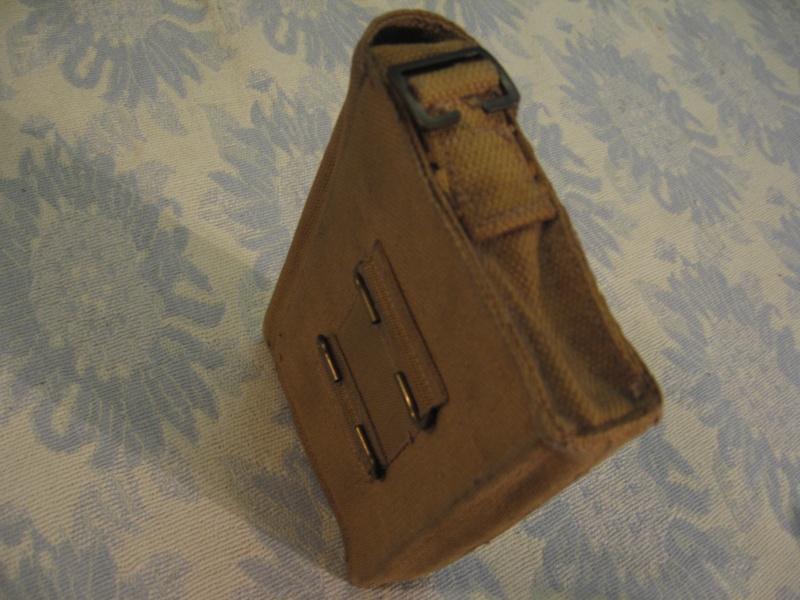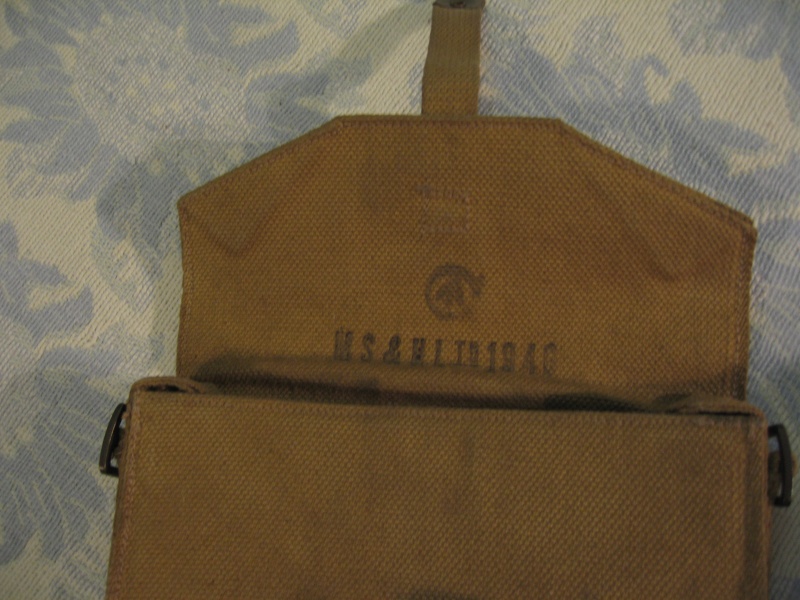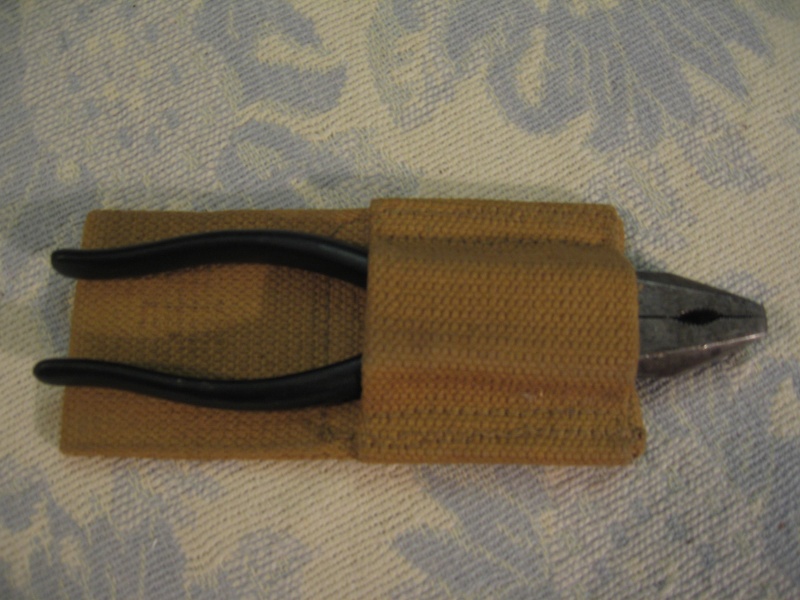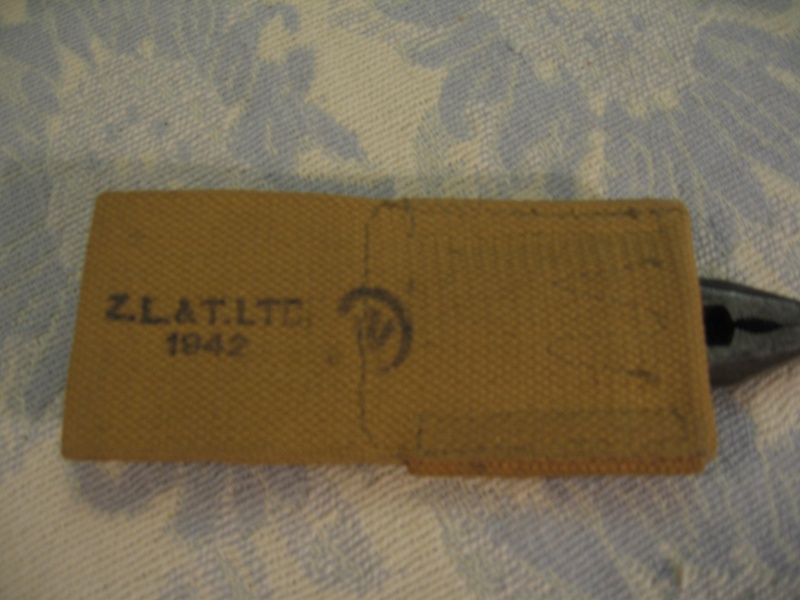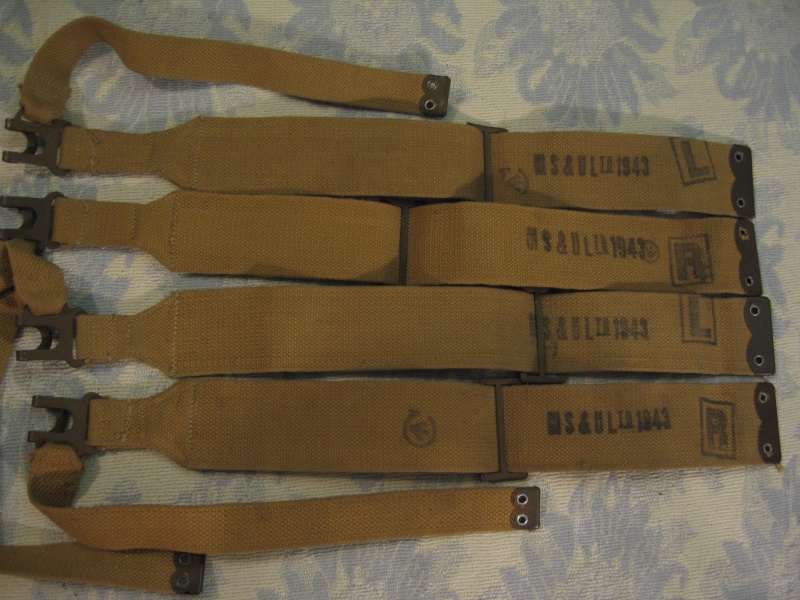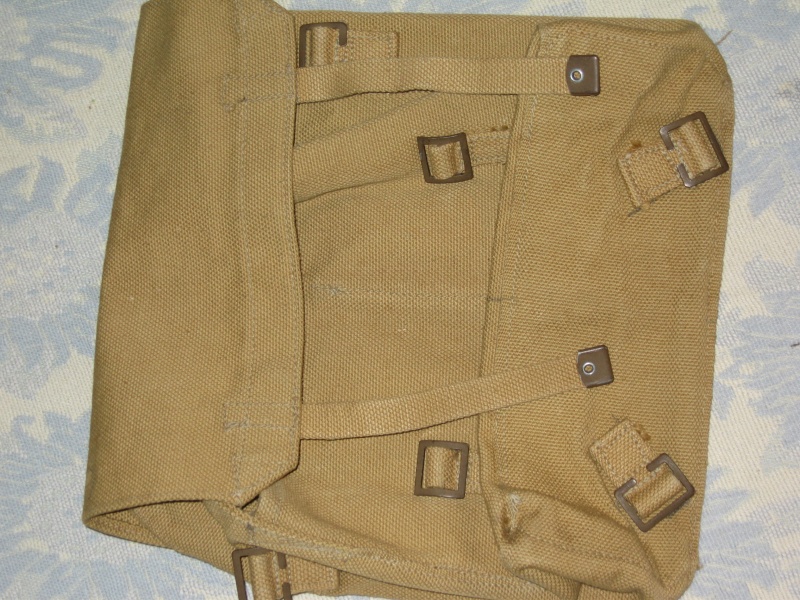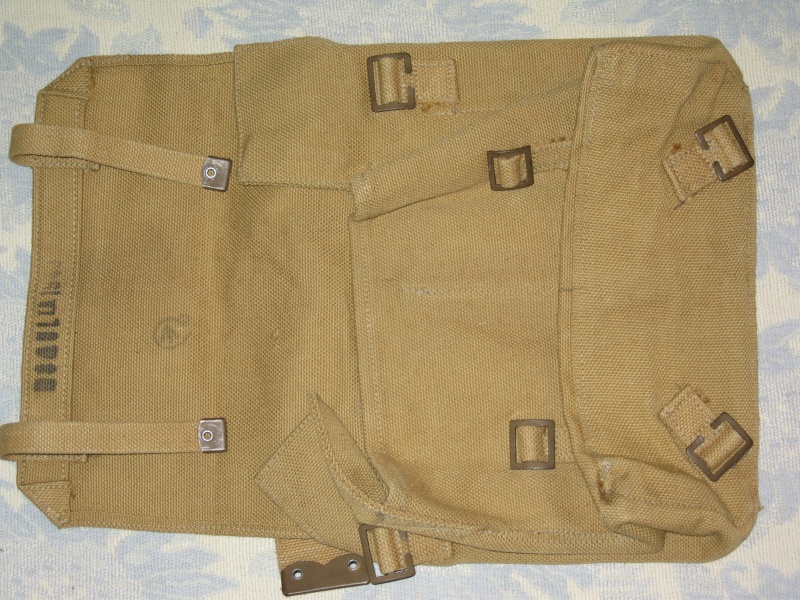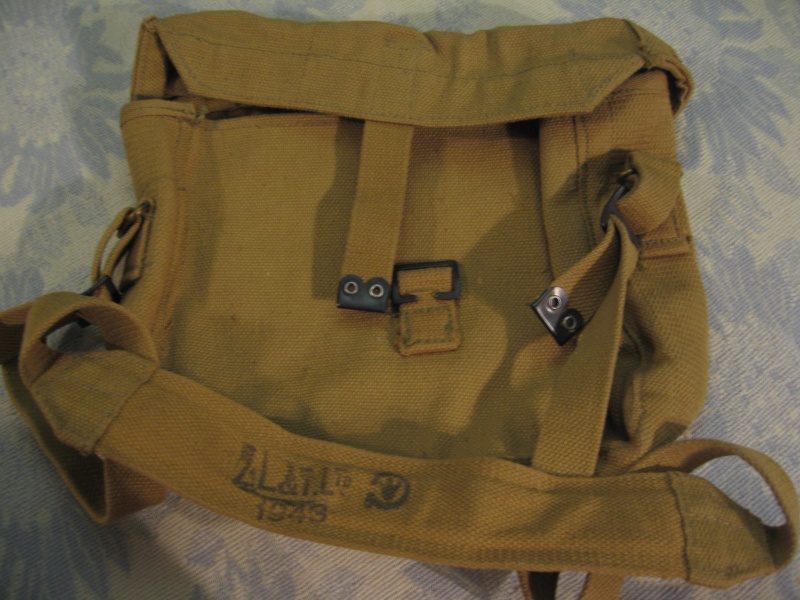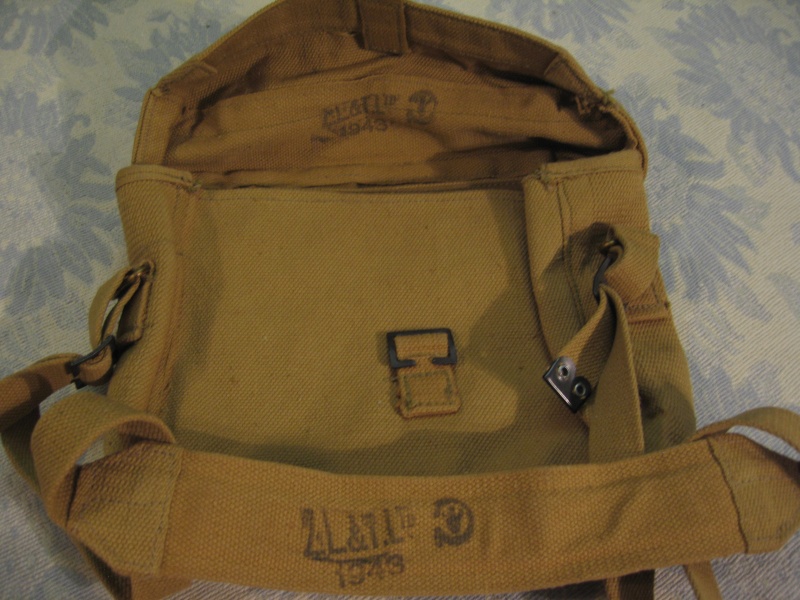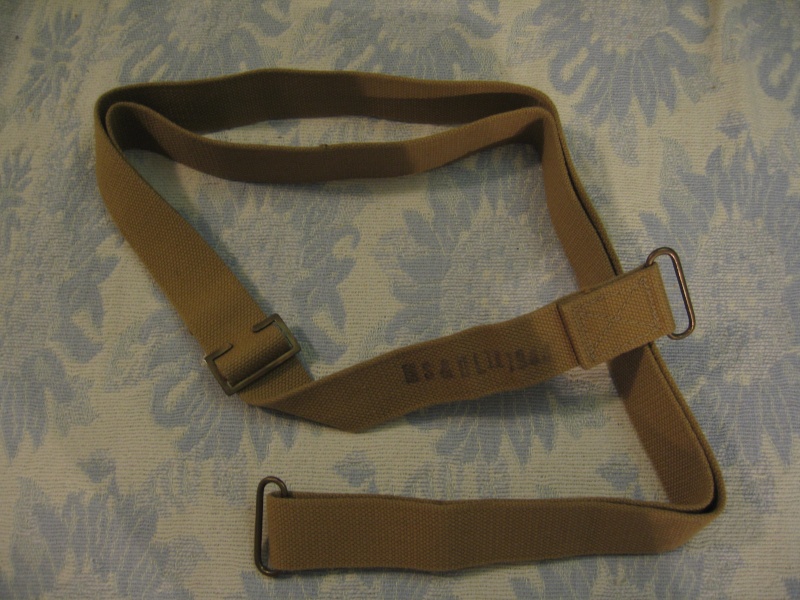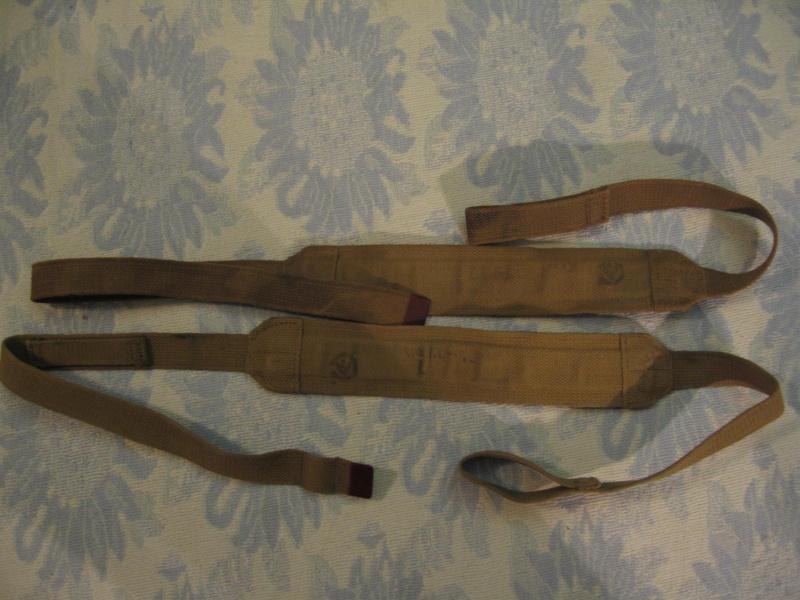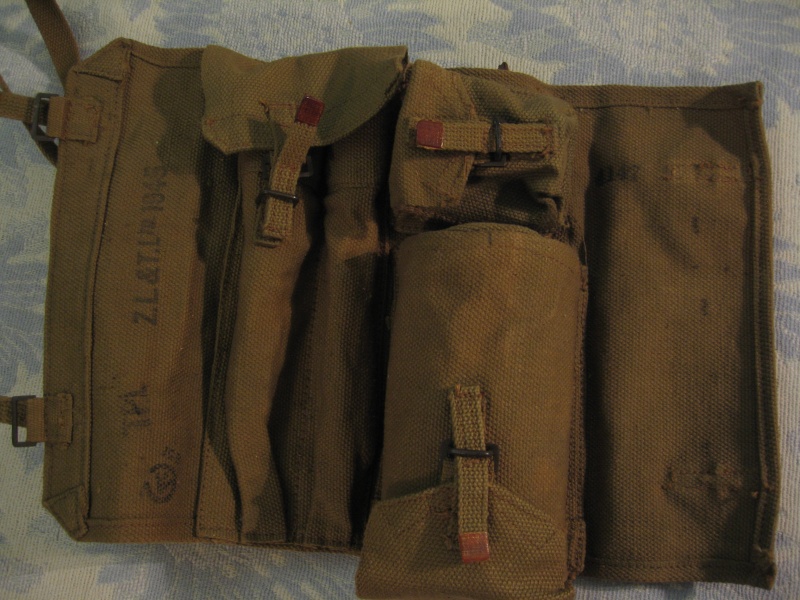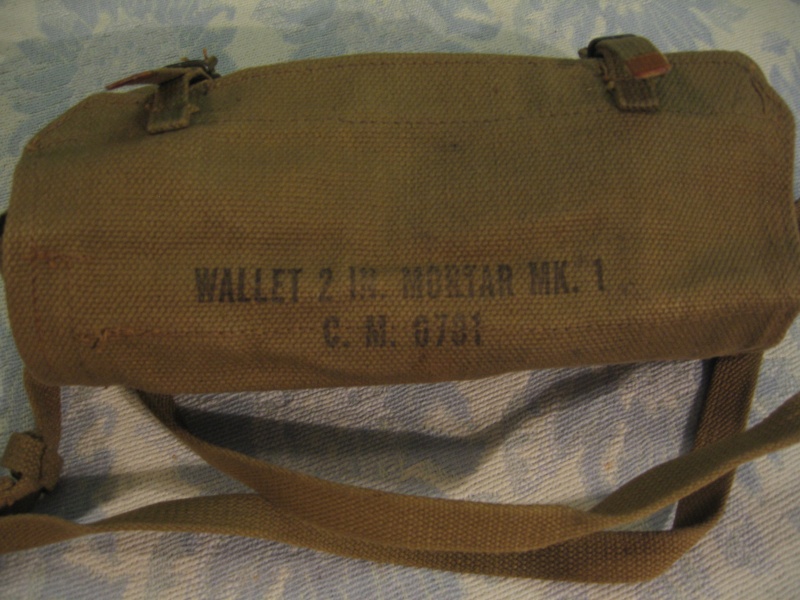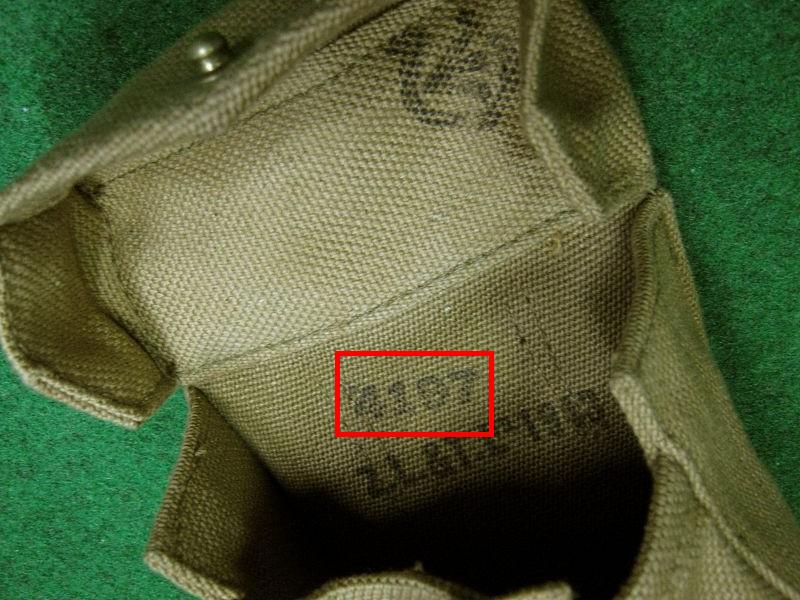 >
> 
• In 1941, basic pouch closure tabs were widened from ¾” to 1”.
 >
> 
• In 1942, a larger webbing holster was created for large frame revolvers.
 >
> 
• In 1942, the water bottle carrier switched from a top-opening stud to a front stud.
 >
> 
• In 1942, a smaller frog appeared specifically designed for the spike bayonet.

• In 1942, the braces were switched from a one-piece construction to multiple pieces (Z.L.&T.LTD. only).
 >
> 
• In 1942, the auxiliary pouch yoke switched from a one-piece construction to multiple pieces. (Z.L.&T.LTD. only)
 >
> 
• In 1942, snaps became smooth rather than pebble-grained.
 >
> 
• Starting in 1942 or 1943, the upper loop of frogs were split and stitched to fit the new spike bayonet (though earlier dated frogs were retrofitted with modified upper loops as well).
 >
> 
• Starting in 1943, brass components were replaced with brown phosphate-finished metal known as "battle brass".
 >
> 
• Starting in 1943, Zephyr Loom & Textile Limited began to intermittently use blackened steel fittings on rifle slings, entrenching tool carriers and L-straps.
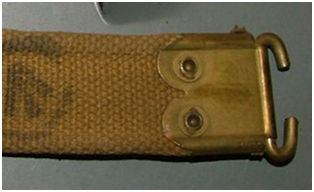 >
> 
• In 1943, the basic pouch buckle became flat pressed rather than curved.
 >
> 
• In 1943, the brace adaptors switched from a movable center bar to a solid center bar.
 >
> 
• Starting in 1942-1943, a cloth rim was included on gaiters, entrenching tool cover, and tanker holster.
 >
> 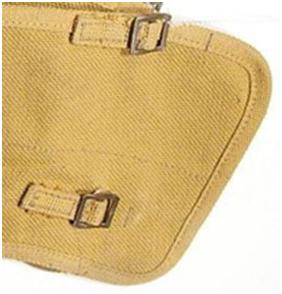
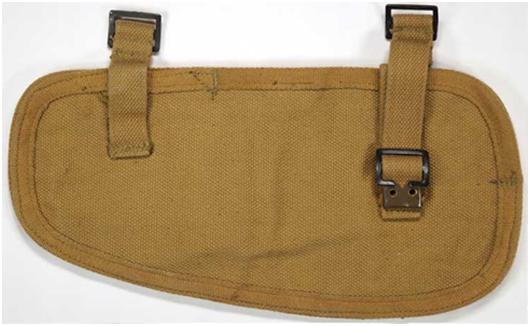
 >
> 
• In 1943, the L-straps (made by Z.L.&T. LTD.) switched to a 2” strap with no 1” reduction.
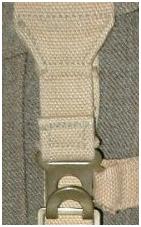 >
> 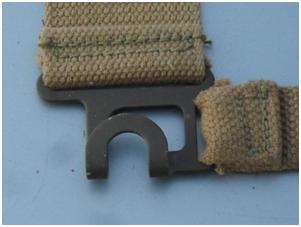
• In late 1943, brace ends switched from eyeleted tips to phenolic resin impregnated tips.
 >
> 
*I do not have any rights to the above pictures, they are used merely for reference purposes.
Last edited by Wgrenadier on Thu Mar 12, 2015 7:00 pm; edited 8 times in total (Reason for editing : Topic pinned)
























